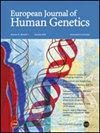Targeted gene sequencing and hearing follow-up in 7501 newborns reveals an improved strategy for newborn hearing screening
IF 4.6
2区 生物学
Q2 BIOCHEMISTRY & MOLECULAR BIOLOGY
引用次数: 0
Abstract
Hearing loss is a common congenital condition. Concurrent newborn hearing and limited genetic screening has been implemented in China for the last decade. However, the role of gene sequencing screening has not been evaluated. In this study, we enrolled 7501 newborns (52.7% male, 47.3% female) in our Newborn Screening with Targeted Sequencing (NESTS) program, and 90 common deafness genes were sequenced for them. Hearing status assessments were conducted via telephone from February 2021 to August 2022, for children aged 3 to 48 months. Of the universal newborn hearing screening, 126 (1.7%) newborns did not pass. Targeted sequencing identified 150 genetically positive newborns (2.0%), with 25 exhibiting dual-positive results in both screening. Following diagnostic audiometry revealed 18 hearing loss newborns and half of them had abnormal results in both screening. The positive predictive value for universal newborn hearing screening alone was merely 14.3% (18/126). However, when combined with targeted sequencing, this rate increased to 36.0% (9/25). Furthermore, limited genetic screening identified 316 carriers of hot-spot variants, but none exhibited biallelic variants. All 15 hot-spot carriers who failed physical screening demonstrated normal hearing during follow-up. In this cohort study of 7501 Newborns, Combining targeted sequencing with universal newborn hearing screening demonstrated technical feasibility and clinical utility of identifying individuals with hearing loss, especially when coupled with genetic counseling and closed-loop management. It is suggested to use this integrated method as an improved strategy instead of the current limited genetic screening program in some regions of China.

对 7501 名新生儿进行靶向基因测序和听力随访,揭示了新生儿听力筛查的改进策略。
听力损失是一种常见的先天性疾病。近十年来,中国一直在开展新生儿听力筛查和有限基因筛查。然而,基因测序筛查的作用尚未得到评估。在这项研究中,我们招募了 7501 名新生儿(52.7% 为男性,47.3% 为女性)参加新生儿基因测序筛查(NESTS)项目,并对他们进行了 90 个常见耳聋基因的测序。2021年2月至2022年8月期间,通过电话对3至48个月大的儿童进行了听力状况评估。在普遍新生儿听力筛查中,有 126 名(1.7%)新生儿未通过筛查。目标测序确定了 150 名基因阳性新生儿(2.0%),其中 25 名新生儿在两次筛查中均表现出双重阳性结果。诊断性测听仪显示有 18 名听力损失的新生儿,其中半数在两次筛查中均出现异常结果。单独进行新生儿听力普查的阳性预测值仅为 14.3%(18/126)。然而,当与定向测序相结合时,这一比例上升至 36.0%(9/25)。此外,有限的基因筛查还发现了 316 个热点变异携带者,但没有人表现出双拷贝变异。所有 15 名未能通过物理筛查的热点变异携带者在随访期间均表现出听力正常。在这项对 7501 名新生儿进行的队列研究中,将靶向测序与普遍新生儿听力筛查相结合,证明了识别听力损失个体的技术可行性和临床实用性,尤其是在与遗传咨询和闭环管理相结合时。建议将这种综合方法作为一种改进策略,以取代目前中国部分地区有限的基因筛查项目。
本文章由计算机程序翻译,如有差异,请以英文原文为准。
求助全文
约1分钟内获得全文
求助全文
来源期刊

European Journal of Human Genetics
生物-生化与分子生物学
CiteScore
9.90
自引率
5.80%
发文量
216
审稿时长
2 months
期刊介绍:
The European Journal of Human Genetics is the official journal of the European Society of Human Genetics, publishing high-quality, original research papers, short reports and reviews in the rapidly expanding field of human genetics and genomics. It covers molecular, clinical and cytogenetics, interfacing between advanced biomedical research and the clinician, and bridging the great diversity of facilities, resources and viewpoints in the genetics community.
Key areas include:
-Monogenic and multifactorial disorders
-Development and malformation
-Hereditary cancer
-Medical Genomics
-Gene mapping and functional studies
-Genotype-phenotype correlations
-Genetic variation and genome diversity
-Statistical and computational genetics
-Bioinformatics
-Advances in diagnostics
-Therapy and prevention
-Animal models
-Genetic services
-Community genetics
 求助内容:
求助内容: 应助结果提醒方式:
应助结果提醒方式:


